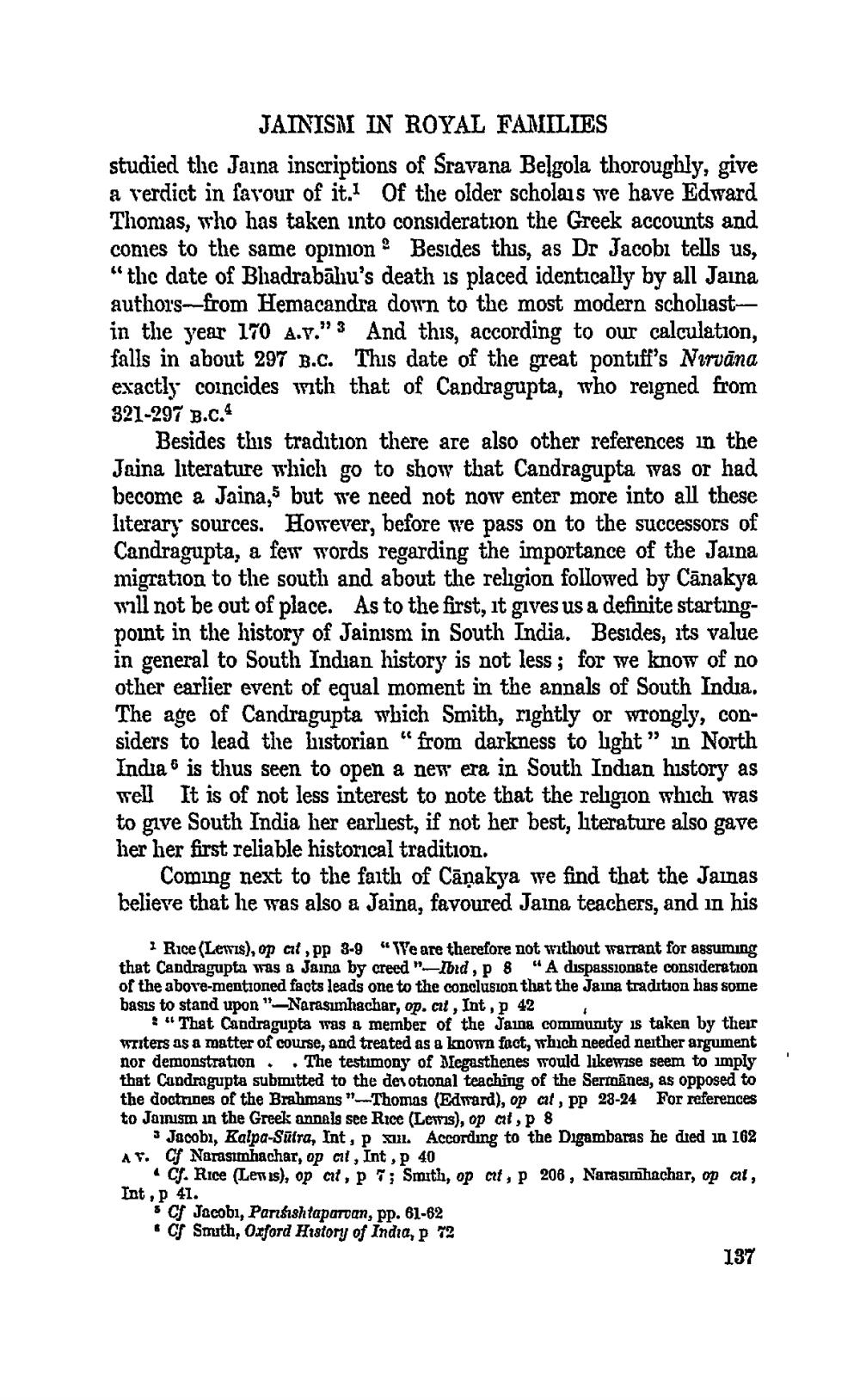________________ JAINISMI IN ROYAL FAMILIES studied thic Jaina inscriptions of Sravana Belgola thoroughly, give a verdict in favour of it. Of the older scholars we have Edward Thomas, who has taken into consideration the Greek accounts and comes to the same opinion Besides this, as Dr Jacobi tells us, "the date of Bhadrabahu's death is placed identically by all Jaina author's--from Hemacandra down to the most modern scholiast-- in the year 170 A.T." 3 And this, according to our calculation, falls in about 297 B.C. This date of the great pontiff's Nirvana exactly coincides with that of Candragupta, who reigned from 321-297 B.C.4 Besides this tradition there are also other references in the Jaina literature which go to show that Candragupta was or had become a Jaina, but we need not now enter more into all these literary sources. However, before we pass on to the successors of Candragupta, a few words regarding the importance of the Jaina migration to the south and about the religion followed by Canakya will not be out of place. As to the first, it gives us a definite startingpoint in the history of Jainism in South India. Besides, its value in general to South Indian history is not less; for we know of no other earlier event of equal moment in the annals of South India. The age of Candragupta which Smith, rightly or wrongly, considers to lead the bustorian " from darkness to light" in North India is thus seen to open a new era in South Indian history as well It is of not less interest to note that the religion which was to give South India her earliest, if not her best, literature also gave her her first reliable historical tradition. Coming next to the faith of Canakya we find that the Jainas believe that he was also a Jaina, favoured Jaina teachers, and in his Rice (Lewis), op cit, pp 8-9 "Ve are therefore not without warrant for assuming that Candragupta was a Jaina by crecd "-Ibid, p 8 "A dispassionate consideration of the above-mentioned facts leads one to the conclusion that the Jaina tradition has some basis to stand upon "--Narasimhachar, op. cit , Int , p 42 ? " That Candragupta was a member of the Jaing community is taken by their writers as a matter of course, and treated as a known fact, which needed neither argument nor demonstration. The testimony of Megasthenes would likewise seem to imply that Candragupta submitted to the devotional teaching of the Sermanes, as opposed to the doctrines of the Brahmans Thomas (Edward), op cit, PP 23-24 For references to Jamison in the Greek annals see Rice (Lewis), op at, p8 Jacobi, Kalpa-Sara, Int, P xul. According to the Digambaras he died in 162 AF. C Narasimhachar, op cit, Int ,p 40 C. Rice (Lenis), op cit, p ; Smith, op a p 206, Narasimhachar, op at, Int , p 41. . c Jacobi, Parsishtaparvan, pp. 61-62 . Cf Smruth, Oxford History of India, P 12 137




